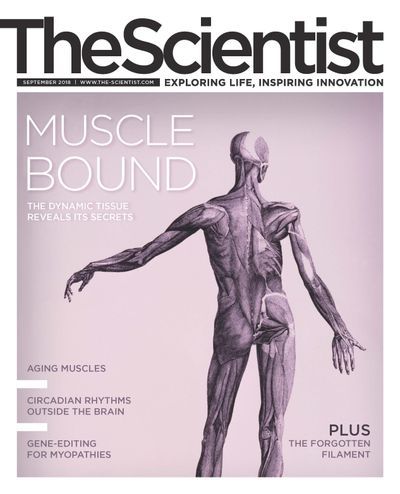ABOVE: © REGENTS OF THE UNIVERSITY OF MICHIGAN
Sarcopenia, the loss of muscle mass with age, can start as early as one’s 30s, and affects a large proportion of the elderly. Fortunately, exercise can combat muscle aging, likely by reversing many of the age-related physiological changes at the root of this decline.
Muscle stem cells: Muscle stem cells, or satellite cells, decrease in number as we age. In elderly-human cells DNA methylation suppresses the expression of some genes, including sprouty 1, an important regulator of satellite cell self-renewal.
Mitochondria: Muscles develop abnormalities in mitochondrial morphology, number, and function with age.
Autophagy: Old muscles undergo lower levels of autophagy. Combined with lower protein production, this can result in an imbalance of proteins linked to muscle aging.
Blood-borne factors: Signaling factors known as myokines can be released into the blood directly or through excreted vesicles, and travel through the circulatory...
Young Muscle

Old Muscle

Exercise: A sedentary lifestyle can induce molecular processes of muscle aging, such as decreases in the efficiency and number of mitochondria. Conversely, exercise reverses a gene expression profile consistent with mitochondrial dysfunction and restores levels of mitochondrial proteins. Exercise also increases autophagy levels and restores levels of myokines involved in muscle function.
Read the full story.
Correction (September 17): The original version of this story showed an image of smooth muscle. This has been replaced with one of skeletal muscle to more accurately reflect the content of the article. The Scientist regrets the error.
Interested in reading more?






